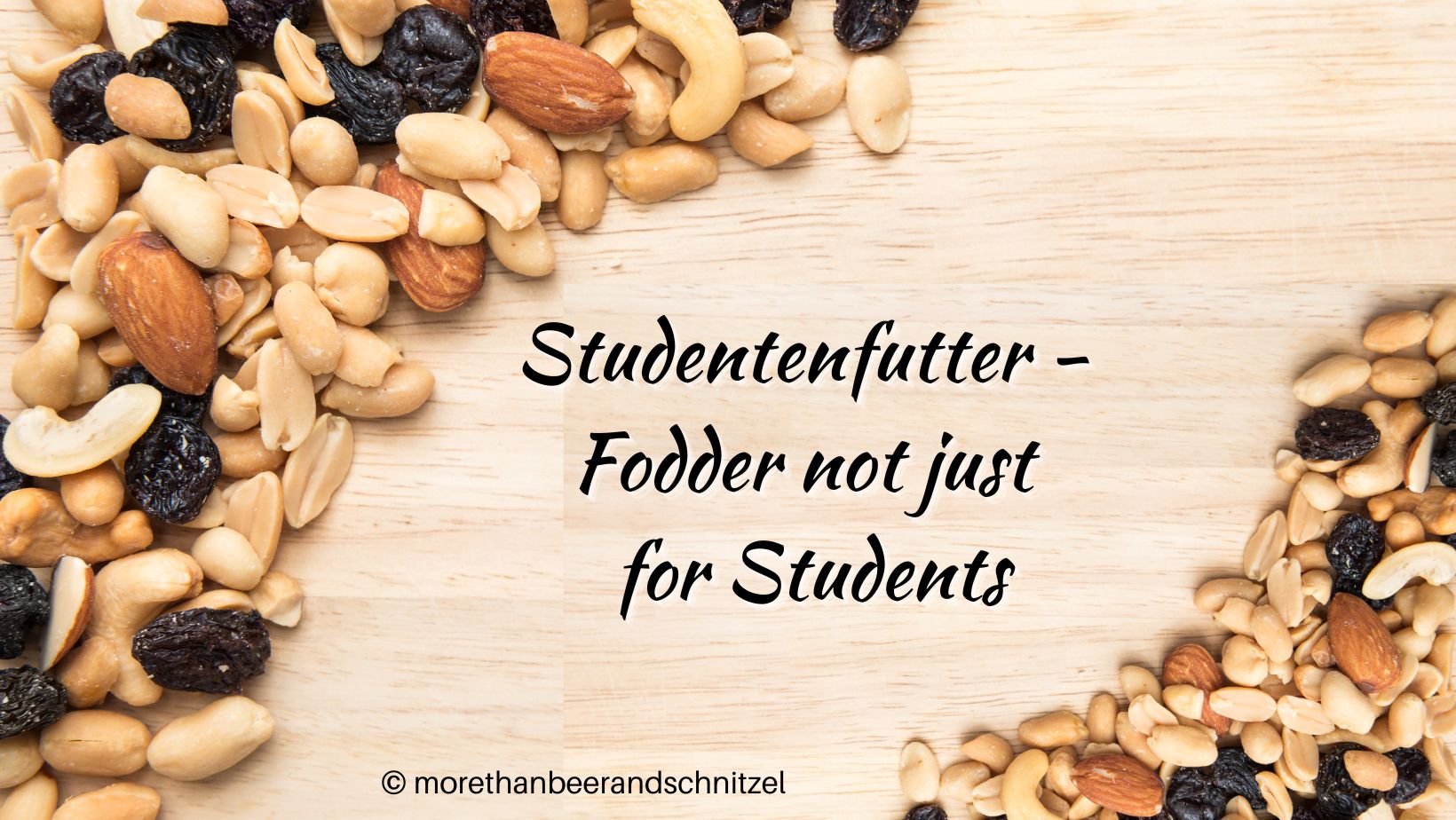Klick hier für die deutsche Version.
August 31st is Trail Mix Day. And trail mix in German is Studentenfutter which literally means students’ feed or fodder.

The word Studentenfutter (also Studentenkonfekt, Studentenhaber (from Hafer – oats), Studentenmarcipan, Naschwerk) is found in literature and encyclopedias as early as the 18th century. At the time, Studentenfutter consisted of almonds and raisins. Exactly how this snack became associated with students is not clear but there are two theories that might both be true.
Students during the 18th and 19th century were almost exclusively young men from rich families, so they could afford the rather expensive almonds. They were also known for drinking often in their Studentenverbindung (similar to a fraternity) and needed something to combat their hangover: almonds. In literature like Goethe’s West-östlicher Divan (1819) and Pohl’s Auf eigenen Füßen (1882) almonds are mentioned as cures for Kater or Katzenjammer (hangover). In Sebastian Brant’s Ship of Fools (1494) almonds, figs, and rice are served after a meal in order to prevent a hangover. Whichever way almonds work, it supposedly helped with alcohol-induced ills.


But we also know that almonds can boost brain power. Hildegard von Bingen (1098-1179) mentioned almonds as a cure for empty brains. And who really can’t afford an empty brain? Students.
But what about the raisins? They were probably added for a sweeter taste.
Sources:
- Peter, Peter (2014): Kulturgeschichte der deutschen Küche. https://www.chbeck.de/peter-kulturgeschichte-deutschen-kueche/product/14692387, https://www.pietropietro.de/
- https://de.wikipedia.org/wiki/Studentenfutter
- https://germanyinusa.com/2018/05/04/word-of-the-week-studentenfutter/



Only registered users can comment.
Comments are closed.